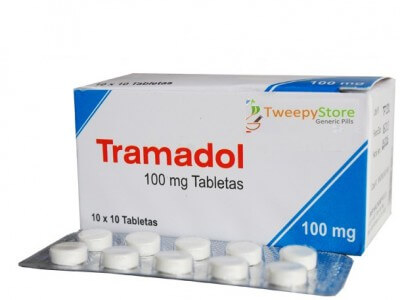Tramadol: What You Need to Know Before Purchasing
Tramadol is a commonly prescribed medication for managing moderate to severe pain. Whether you’re recovering from surgery, dealing with chronic pain, or addressing an injury, Tramadol can help alleviate discomfort and improve your quality of life. This guide explores the uses, benefits, potential risks, and how to purchase Tramadol safely and legally.
What Is Tramadol?
Tramadol is a synthetic opioid analgesic designed to treat pain by altering how your brain perceives it. It is often prescribed for:
- Post-surgery pain relief
- Chronic conditions like arthritis or fibromyalgia
- Acute injuries, such as fractures or muscle strains
Available in various forms, including tablets, capsules, and extended-release versions, Tramadol provides flexibility depending on your medical needs.
How Does Tramadol Work?
Tramadol works by binding to opioid receptors in the brain and spinal cord. This reduces the intensity of pain signals and increases the levels of serotonin and norepinephrine, chemicals that play a role in pain modulation. Its dual-action mechanism makes it effective for different types of pain.
Benefits of Using Tramadol
Many patients find Tramadol effective because of its unique properties. Here are some benefits:
- Effective Pain Relief: Provides relief for moderate to severe pain.
- Extended Options: Extended-release formulations are ideal for chronic conditions.
- Low Risk of Gastrointestinal Issues: Compared to NSAIDs, Tramadol poses less risk of stomach ulcers.
If prescribed appropriately and taken as directed, Tramadol can improve your daily functionality and overall well-being.
Potential Risks and Side Effects
Like any medication, Tramadol has potential risks and side effects. It’s essential to understand these before use:
- Common Side Effects:
- Dizziness
- Nausea
- Constipation
- Drowsiness
- Severe Risks:
- Dependency and addiction
- Respiratory depression
- Serotonin syndrome (when combined with certain antidepressants)
To minimize risks, follow your doctor’s prescription and discuss any medical conditions or other medications you’re taking.
Is Tramadol Right for You?
Before starting painkiller , consult your healthcare provider. This medication is not suitable for everyone. Key considerations include:
- Age Restrictions: Not recommended for children under 12.
- Pregnancy and Breastfeeding: Use only if prescribed during pregnancy; avoid while breastfeeding.
- Medical History: Conditions like respiratory disorders, liver or kidney disease, or a history of substance abuse should be disclosed to your doctor.
Your healthcare provider will determine the appropriate dosage and duration to ensure safe and effective use.
Tips for Safe Use
Here are practical tips for using Tramadol safely:
- Follow the Prescription: Take the exact dosage prescribed.
- Avoid Alcohol: Mixing painkiller with alcohol increases the risk of side effects.
- Do Not Share: This medication is prescribed based on individual needs.
- Storage: Keep it in a secure place, away from children.
- Disposal: Dispose of unused medication responsibly to prevent misuse.
Purchasing Tramadol Safely
If you’re considering buying painkiller , it’s essential to ensure you do so legally and safely. Here’s how:
1. Consult Your Doctor
painkiller is a prescription medication in many countries. Speak with your healthcare provider to obtain a valid prescription.
2. Use a Licensed Pharmacy
Only purchase from licensed pharmacies to avoid counterfeit medications. Look for:
- Verified online pharmacies (check for certification like VIPPS in the U.S.).
- Local pharmacies with a licensed pharmacist on-site.
3. Avoid Unverified Sources
Purchasing from unverified online sources can lead to counterfeit or unsafe products. Risks include:
- Receiving substandard medication
- Legal repercussions
- Exposure to harmful ingredients
How to Identify a Reliable Online Pharmacy
If you choose to buy painkiller online, follow these steps:
- Check for Accreditation: Ensure the pharmacy is certified by national or international regulatory bodies.
- Read Reviews: Look for customer reviews to assess reliability.
- Verify Prescription Requirement: Legitimate pharmacies require a valid prescription.
- Secure Payment Methods: Use pharmacies with encrypted payment systems for added security.
By following these guidelines, you can avoid scams and prioritize your safety.
Alternatives to Tramadol
While painkiller is effective, it may not be suitable for everyone. Alternatives include:
- Non-Opioid Pain Relievers: Acetaminophen or ibuprofen for mild pain.
- Physical Therapy: Strengthening exercises to manage chronic pain.
- Topical Treatments: Gels and creams for localized pain relief.
Discuss these options with your doctor if you’re concerned about Tramadol’s side effects or risks.
Final Thoughts on Managing Pain
painkiller is a valuable tool for managing pain when used responsibly and under medical supervision. Always consult your healthcare provider before starting or stopping this medication. If you’re considering purchasing painkiller , prioritize safety by choosing licensed pharmacies and following legal guidelines.
By staying informed and cautious, you can manage your pain effectively while minimizing risks.


